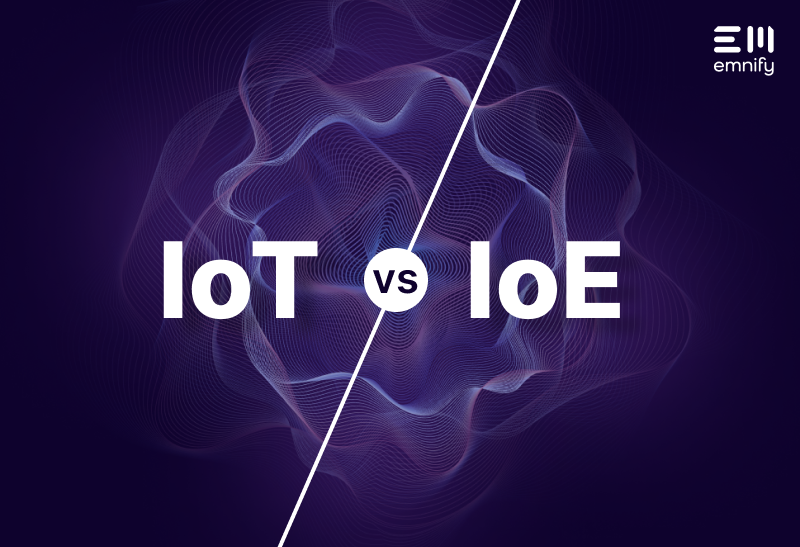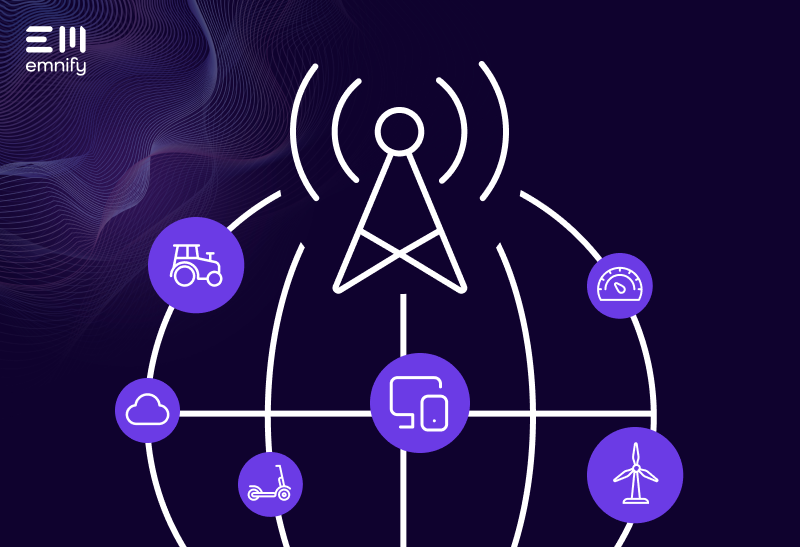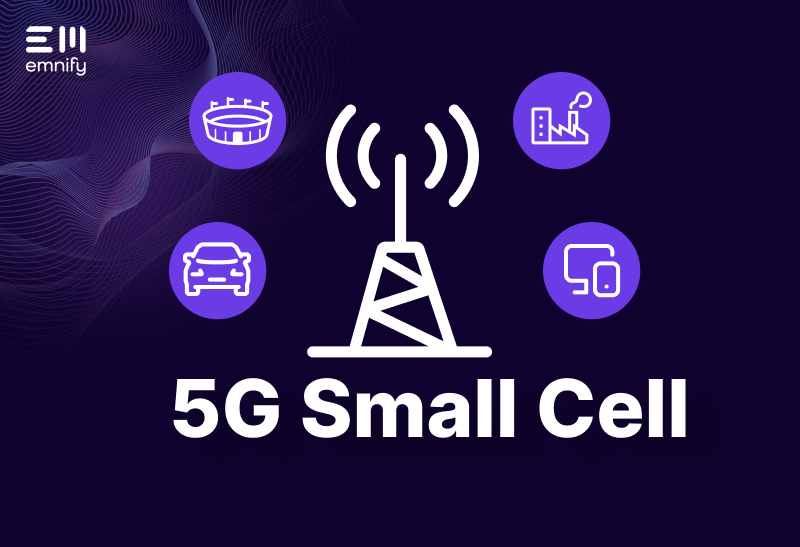

Quick definition: IoE stands for Internet of Everything, while IoT stands for Internet of Things. Each refers to connecting physical devices and applications, but IoE implies using these connected devices as part of a larger, more intelligent system. Cisco coined the term IoE in 2013 and defines it as “the networked connection of people, process, data, and things.”
Whether you’re an IoT manufacturer or simply exploring this ever-growing branch of modern technology, it helps to be familiar with IoE and understand how it differs from IoT. In this article, we’ll clarify the difference. But first, let’s take a closer look at each of these terms.
What is the Internet of Things (IoT)?
The term “Internet of Things” was first used in 1999 to describe the revolutionary technology that allowed Procter & Gamble’s RFID system to communicate over the Internet. In the following decades, IoT evolved to benefit far more than just retail. Connected devices now improve and automate industrial processes, transportation, agriculture, healthcare, energy, media, and more.
But IoT technology hasn’t just broadened to other industries. Today, IoT describes devices that communicate through all kinds of connectivity, not just the Internet. It includes applications that rely on cellular networks, Bluetooth, Zigbee, Power Line Communication, and other technologies that don’t necessarily involve passing data through the Internet at all.
Some IoT devices send information to an application for a human to respond to, like many wearable consumer devices, or GPS trackers used in fleet management. Others use the connections between physical devices, sensors, and applications to automate processes, like when a predictive maintenance solution orders replacement parts after it detects anomalous conditions relating to an imminent part failure. Smart traffic lights can also interact with each other, react to changes in traffic conditions, and respond to input from a human operator.
In its simplest form, an IoT device is merely a sensor that collects and transmits data through a network. These sensors may or may not be connected to actuators, which enable them to control physical devices and equipment. They can be connected to other devices or applications.
What is the Internet of Everything (IoE)?
Cisco first used the term IoE in 2013 to describe the broad opportunities for connectivity to improve communities and industries. Today, IoT professionals consider concepts like smart grids, smart buildings, and smart farming to be specific IoT use cases. But a decade ago, Cisco argued that IoT was too narrowly focused on individual devices to encompass these larger categories of connectivity opportunities, which include a combination of People-to-People (P2P), Machine-to-People (M2P), and Machine-to-Machine (M2M) connections.
Many of the industry-specific and cross-industry use cases Cisco identified in The Internet of Everything Value Index Study have already come to fruition, and they’re typically referred to as IoT use cases or examples of IoT. However, some of the areas Cisco examined wouldn’t necessarily be considered IoT, particularly “people-to-people” examples like telecommuting. When you hop on a Zoom or Microsoft Teams call for work, you’re not using IoT to do it—that’s just the Internet.
Perhaps the most useful way to think about IoE is as broader areas that can benefit from connectivity. It’s more about the industries and processes that IoT can support, not individual use cases.
The difference between IoE and IoT
Cisco invented a term to describe the extent to which connectivity could change the world. Their vision was even broader than what IoT has become today. But it also included use cases that are clearly examples of IoT, like digital signage.
Overwhelmingly, IoT is the term used to describe the growing body of technology and use cases for connectivity.
A smart irrigation system is IoT. A cow-milking robot is IoT. And even the broader category, smart agriculture, is IoT. But each of these individual solutions involves numerous connected sensors interacting with each other, physical devices, people, and applications. Cisco likely intended for IoE to describe connected technology collectively, but as IoT matured, it’s far more common to refer to just about anything that relies on a connected device as IoT (or M2M).
Many IoT solutions could be described as IoE—it just depends on what a given device is connected to, how it’s used, and whether you’re describing the device alone or the entire ecosystem of devices, data, people, and processes that make the solution possible. But calling these solutions “IoT” works just as well. In fact, since IoT is so much more common, using IoT to broadly refer to anything in this space is less likely to cause confusion.
While you may encounter other definitions of IoE that suggest it somehow “builds on” IoT or represents the next phase of IoT, the reality is that even after 10 years, this term still hasn’t taken hold to the degree that IoT has, and these “differences” are mostly semantics. IoT doesn’t just refer to physical devices—it’s all the “things” that are connected, whether that’s a network of devices or an application people interact with.
Keep learning about IoT
Connectivity is simple to implement, but there’s a lot to learn about how it works. Our article, The Future of Connectivity: How IoT Is Evolving, is a great place to start. If you want to learn something more specific about IoT, you can also explore our IoT blog.
Get in touch with our IoT experts
Discover how emnify can help you grow your business and talk to one of our IoT consultants today!

Shannon has over seven years of experience communicating with audiences on behalf of businesses. She is passionate about making complex, technical topics easy to understand for readers of all backgrounds.


